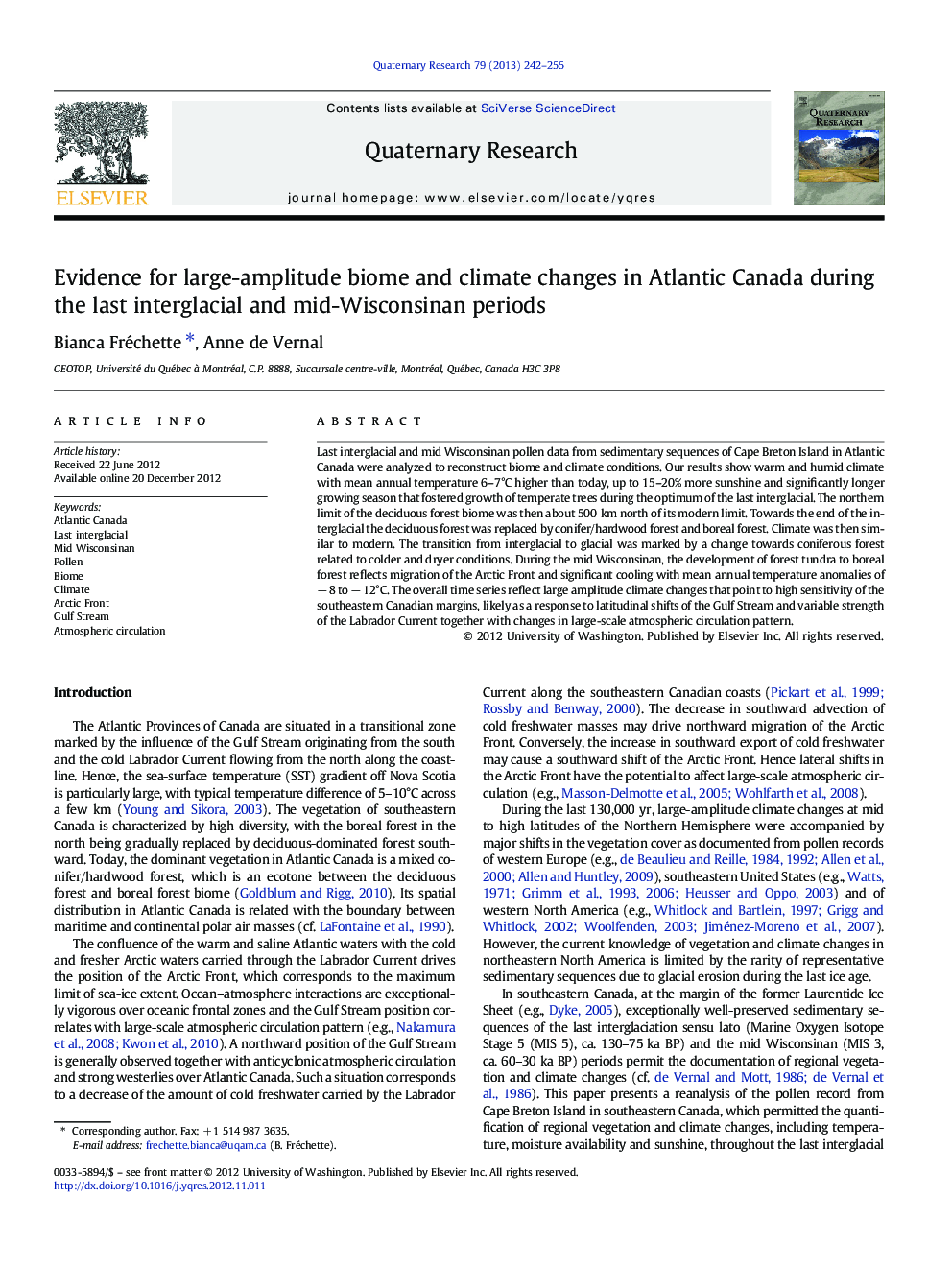| Article ID | Journal | Published Year | Pages | File Type |
|---|---|---|---|---|
| 1045488 | Quaternary Research | 2013 | 14 Pages |
Last interglacial and mid Wisconsinan pollen data from sedimentary sequences of Cape Breton Island in Atlantic Canada were analyzed to reconstruct biome and climate conditions. Our results show warm and humid climate with mean annual temperature 6–7°C higher than today, up to 15–20% more sunshine and significantly longer growing season that fostered growth of temperate trees during the optimum of the last interglacial. The northern limit of the deciduous forest biome was then about 500 km north of its modern limit. Towards the end of the interglacial the deciduous forest was replaced by conifer/hardwood forest and boreal forest. Climate was then similar to modern. The transition from interglacial to glacial was marked by a change towards coniferous forest related to colder and dryer conditions. During the mid Wisconsinan, the development of forest tundra to boreal forest reflects migration of the Arctic Front and significant cooling with mean annual temperature anomalies of − 8 to − 12°C. The overall time series reflect large amplitude climate changes that point to high sensitivity of the southeastern Canadian margins, likely as a response to latitudinal shifts of the Gulf Stream and variable strength of the Labrador Current together with changes in large-scale atmospheric circulation pattern.
